#Global Waste Water Management Market
Text
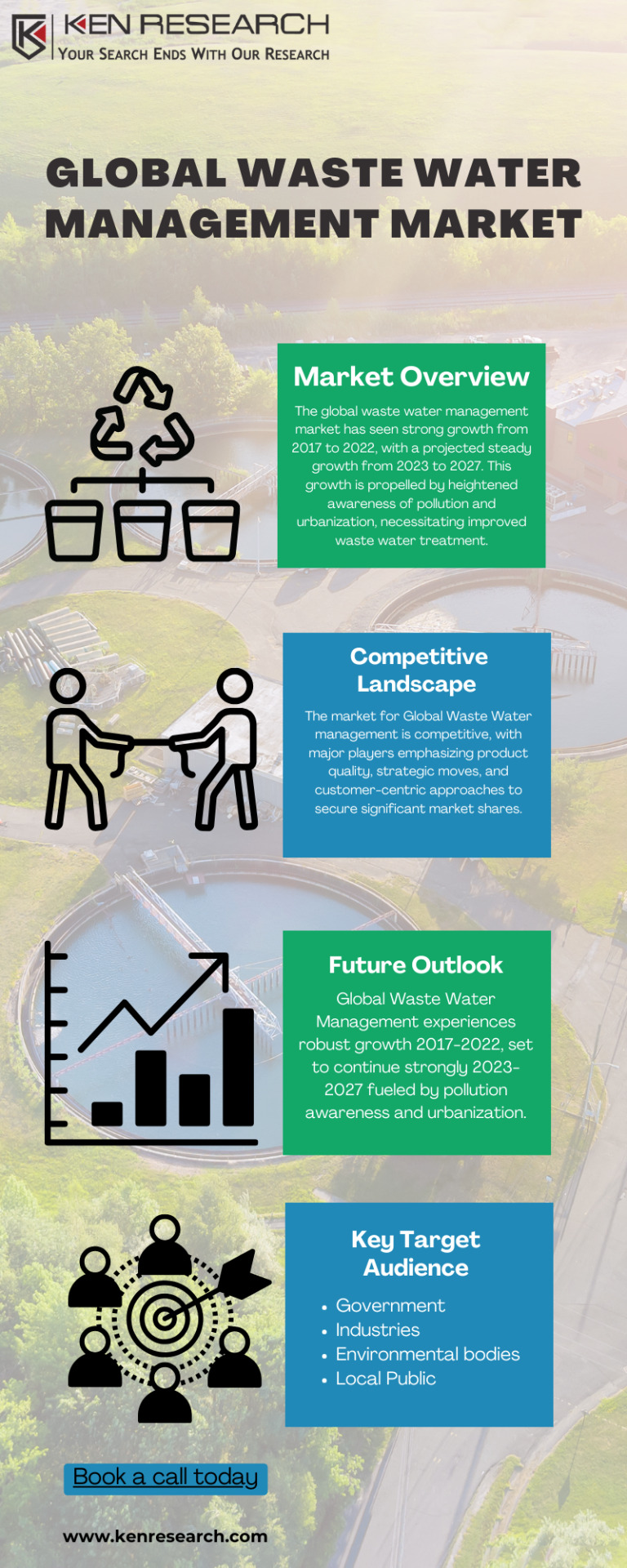
Worldwide Water Waste Management Market 2023-2027
#Global Waste Water Management Market#market research#Global Industrial Waste Water Management Market#Global Sewerage Water Management Market#Global Waste Water Management Market Opportunities#Global Effluent Water Management Market
0 notes
Text
Water and Wastewater Treatment Equipment Market, Analyzing Market Forces, Technological Advancements, and Environmental Impacts
The global water and wastewater treatment equipment market size is anticipated to reach USD 90.0 billion by 2030, registering a CAGR of 4.6% over the forecast period, according to a new report by Grand View Research, Inc. The market is driven by increasing demand for clean and safe water in both developed and emerging economies. This is due to growing concerns over water pollution and scarcity, and the need for effective wastewater management.
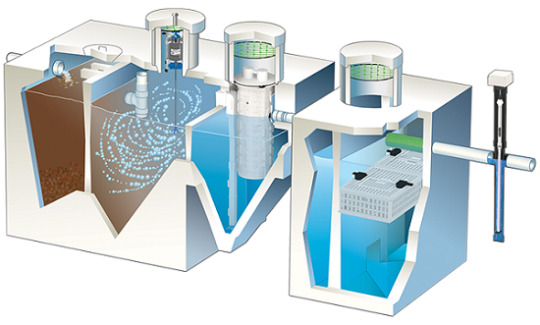
Water And Wastewater Treatment Equipment Market Report Highlights
Asia Pacific accounted for the largest revenue share of the global market in 2023, accounting for 35.1%, and is expected to maintain its dominance throughout the forecast period. This can be attributed to the presence of a strong consumer base that has led to significant demand for water and wastewater treatment equipment
By application, the municipal segment dominated the market with a revenue share of 66.0% in 2023. The increasing initiatives undertaken by governments, strict environmental regulations, and increasing awareness regarding water treatment are some of the factors contributing to the growth of the municipal segment over the forecast period
By process, the tertiary treatment segment dominated the market with a revenue share of 44.2% in 2023. Some of the drivers for the increasing demand for tertiary wastewater treatment are environmental protection, water scarcity, and the increasing demand for clean water. As these issues continue to be major concerns across the world, the demand for tertiary wastewater treatment is expected to grow over the forecast period
Major key players frequently engage in mergers & acquisitions and new product launches to maintain their market shares. For instance, in March 2022, Pentair plc, announced the definitive agreement to acquire Manitowoc Ice. The move was taken by the company to enhance its commercial water solutions platform and cater to the demand from the food service industry
For More Details or Sample Copy please visit link @: Water And Wastewater Treatment Equipment Market Report
Furthermore, the demand for decentralized wastewater treatment systems is expected to increase over the projected period, as these systems offer several advantages such as low operating costs, high treatment efficiency, and easy maintenance. Several companies are focusing on developing innovative decentralized wastewater treatment systems that can be easily installed in residential and commercial buildings.
Population growth, urbanization, increasing industrialization, and the need for clean water for various purposes such as drinking, agriculture, and industrial processes all drive demand for water and wastewater treatment equipment. Government regulations aimed at protecting the environment and ensuring public health also have an impact on the demand for water and wastewater treatment equipment.
The market players are constantly undertaking strategic initiatives such as mergers, acquisitions, partnerships, and new product launches to gain a competitive advantage. For instance, Ceco Environmental, a provider of air pollution control solutions, announced the acquisition of Compass Water Solutions, a provider of water and wastewater treatment equipment. The acquisition will enable Ceco Environmental to integrate Compass Water Solutions’ critical engineered solutions with its industrial water capabilities.
WaterAndWastewaterTreatmentEquipmentMarket #WaterAndWastewaterTreatmentEquipment #WaterTreatment #WastewaterManagement #EnvironmentalEngineering #SustainableTechnology #CleanWaterSolutions #IndustrialWaterTreatment #WaterPurification #GreenInfrastructure #InnovationInWaterManagement #WaterQualityControl #WastewaterRecycling #MarketTrends #EnvironmentalCompliance #SmartWaterTechnologies #RegulatoryFrameworks #EcoFriendlySolutions #EmergingTechnologies #ResourceRecovery
#Water and Wastewater Treatment Equipment Market#Water and Wastewater Treatment Equipment#Water Treatment#Waste water Management#Environmental Engineering#Sustainable Technology#Clean Water Solutions#Industrial Water Treatment#Water Purification#Global Market Analysis#Green Infrastructure#Innovation In Water Management#Water Quality Control#Waste-water Recycling#Environmental Compliance#Smart Water Technologies#Regulatory Frameworks#Eco-Friendly Solutions#Emerging Technologies#Resource Recovery
0 notes
Text
The phone or computer you’re reading this on may not be long for this world. Maybe you’ll drop it in water, or your dog will make a chew toy of it, or it’ll reach obsolescence. If you can’t repair it and have to discard it, the device will become e-waste, joining an alarmingly large mountain of defunct TVs, refrigerators, washing machines, cameras, routers, electric toothbrushes, headphones. This is “electrical and electronic equipment,” aka EEE—anything with a plug or battery. It’s increasingly out of control.
As economies develop and the consumerist lifestyle spreads around the world, e-waste has turned into a full-blown environmental crisis. People living in high-income countries own, on average, 109 EEE devices per capita, while those in low-income nations have just four. A new UN report finds that in 2022, humanity churned out 137 billion pounds of e-waste—more than 17 pounds for every person on Earth—and recycled less than a quarter of it.
That also represents about $62 billion worth of recoverable materials, like iron, copper, and gold, hitting e-waste landfills each year. At this pace, e-waste will grow by 33 percent by 2030, while the recycling rate could decline to 20 percent. (You can see this growth in the graph below: purple is EEE on the market, black is e-waste, and green is what gets recycled.)
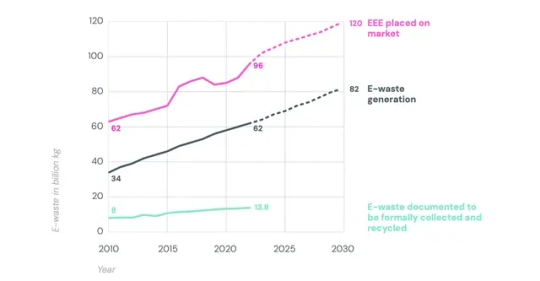
“What was really alarming to me is that the speed at which this is growing is much quicker than the speed that e-waste is properly collected and recycled,” says Kees Baldé, a senior scientific specialist at the United Nations Institute for Training and Research and lead author of the report. “We just consume way too much, and we dispose of things way too quickly. We buy things we may not even need, because it's just very cheap. And also these products are not designed to be repaired.”
Humanity has to quickly bump up those recycling rates, the report stresses. In the first pie chart below, you can see the significant amount of metals we could be saving, mostly iron (chemical symbol Fe, in light gray), along with aluminum (Al, in dark gray), copper (Cu), and nickel (Ni). Other EEE metals include zinc, tin, and antimony. Overall, the report found that in 2022, generated e-waste contained 68 billion pounds of metal.
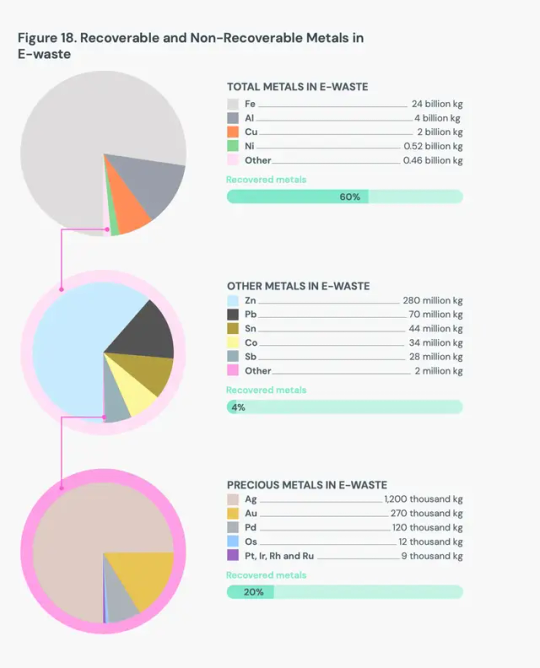
E-waste is a complex thing to break down: A washing machine is made of totally different components than a TV. And even for product categories, not only do different brands use different manufacturing processes, but even different models within those brands vary significantly. A new washing machine has way more sensors and other electronics than one built 30 years ago.
Complicating matters even further, e-waste can contain hazardous materials, like cobalt, flame retardants, and lead. The report found that each year, improperly processed e-waste releases more than 125,000 pounds of mercury alone, imperiling the health of humans and other animals. “Electronic waste is an extremely complex waste stream,” says Vanessa Gray, head of the Environment and Emergency Telecommunications Division at the UN’s International Telecommunication Union and an author of the report. “You have a lot of value in electronic waste, but you also have a lot of toxic materials that are dangerous to the environment.”
That makes recycling e-waste a dangerous occupation. In low- and middle-income countries, informal e-waste recyclers might go door-to-door collecting the stuff. To extract valuable metals, they melt down components without proper safety equipment, poisoning themselves and the environment. The new report notes that in total, 7.3 billion pounds of e-waste is shipped uncontrolled globally, meaning its ultimate management is unknown and likely not done in an environmentally friendly way. Of that, high-income countries shipped 1.8 billion pounds to low- and middle-income countries in 2022, swamping them with dangerous materials.
High-income countries have some of this informal recycling, but they also have formal facilities where e-waste is sorted and safely broken down. Europe, for example, has fairly high formal e-waste recycling rates, at about 43 percent. But globally, recycling is happening nowhere near enough to keep up with the year-over-year growth of the waste. Instead of properly mining EEE for metals, humanity keeps mining more ore out of the ground.
Still, the report found that even the small amount of e-waste that currently gets recycled avoided the mining of 2 trillion pounds of ore for virgin metal in 2022. (It takes a lot of ore to produce a little bit of metal.) The more metals we can recycle from e-waste, the less mining we’ll need to support the proliferation of gadgets. That would in turn avoid the greenhouse gases from such mining operations, plus losses of biodiversity.

The complexity of e-waste, though, makes it expensive to process. As the chart above shows, even an ambitious scenario of a formal e-waste collection rate in 2030 is 44 percent. “There is no business case for companies to just collect e-waste and to make a profit out of this in a sustainable manner,” says Baldé. “They can only survive if there is legislation in place which is also compensating them.”
The report notes that 81 countries have e-waste policies on the books, and of those, 67 have provisions regarding extended producer responsibility, or EPR. This involves fees paid by manufacturers of EEE that would go toward e-waste management.
Of course, people could also stop throwing so many devices away in the first place, something right-to-repair advocates have spent years fighting for. Batteries, for instance, lose capacity after a certain number of charge cycles. If a phone can’t hold a charge all day anymore, customers should be able to swap in a new battery. “Manufacturers shouldn't be able to put artificial limitations on that ability,” says Elizabeth Chamberlain, director of sustainability at iFixit, which provides repair guides and tools. That includes limiting access to parts and documentation. “Repair is a harm-reduction strategy. It's not the be-all-end-all solution, but it's one of many things we need to do as a global society to slow down the rate at which we're demanding things of the planet.”
At the core of the e-waste crisis is the demand: A growing human population needs phones to communicate and fridges to keep food safe and heat pumps to stay comfortable indoors. So first and foremost we need high-quality products that don’t immediately break down, but also the right to repair when they do. And what absolutely can’t be fixed needs to move through a safe, robust e-waste recycling system. “We are consuming so much,” says Baldé, “we cannot really recycle our way out of the problem.”
26 notes
·
View notes
Text
Good News - March 22-28
Like these weekly compilations? Support me on Ko-fi! Also, if you tip me on here or Ko-fi, at the end of the month I’ll send you a link to all of the articles I found but didn’t use each week - almost double the content! (I’m new to taking tips on here; if it doesn’t show me your username or if you have DM’s turned off, please send me a screenshot of your payment)
1. Scimitar-horned Oryx: A Story of Global Conservation Success

“Eight years following the first reintroductions of the species in a protected range in Chad, the species has been downlisted to ‘Endangered’ [an improvement from “extinct in the wild”] in the most recent IUCN Red List update.”
2. Thailand moves closer to legalising same-sex marriage

“Under the law, it describes a marriage union as one between two individuals, rather than a man and a woman. It will give LGBTQ+ couples the ability to adopt, have equal access to marital tax savings, rights to property and the ability to decide medical treatment when their partner is incapacitated.”
3. Juvenile platypus found in NSW: a sign of breeding success

“A baby platypus was discovered in the Royal National Park less than a year after 10 were reintroduced to the area, marking the end of a half-century local extinction. […] “Finding the juvenile platypus is a clear sign the reintroduced population is not just surviving but thriving, adapting well to their environment, and contributing to the genetic diversity and resilience of this iconic species.””
4. New Laws Protect Bird-Friendly Yards From Neighborhood Rules
“A blossoming legislative trend prevents homeowners associations, which set landscaping rules for a growing number of Americans, from forbidding native plants.”
5. Bookstores Around The World Are Flourishing Again

“[I]t’s not just the major chains like Barnes & Noble that are flourishing, as the US book sales market continues to both grow and diversify, the majority of the retail book market is controlled by small indie stores.”
6. 'Like a luxury condominium': Providence zoo unveils new red panda habitat

“"Kendji and Zan's new home boasts a spacious two-story, climate-controlled indoor space designed to mimic their natural Himalayan habitat," the zoo said in a news release. "This ensures their well-being regardless of fluctuating Rhode Island temperatures and humidity."”
7. The first CULTIVATE Mobile Research Lab on food sharing in Barcelona
“[Volunteers] engaged in growing, cooking and eating food together, and redistributing surplus food, as well as other actors involved in food sharing and sustainable food systems in Barcelona and its surroundings.”
8. New Methane Rule Will Reduce Natural Gas Waste, Generate Money for Taxpayers, Help Address Climate Change

“The Bureau of Land Management’s final rule on reducing methane waste from oil and gas production on public lands will conserve critical energy resources, with the added benefit of decreasing toxic pollution [….] The rule will benefit wildlife, public lands, water resources, and nearby communities. By requiring royalties for wasted methane, the rule will also generate more than $50 million each year for American taxpayers.”
9. 'Exceptional' Two-Headed Snake Undergoes Surgery in Missouri

“Tiger-Lily's [the snake’s] abnormal ovaries were then removed during surgery at the Saint Louis Zoo Endangered Species Research Center and Veterinary Hospital on March 11. The procedure went smoothly, with her ovaries being successfully removed, and the snake is recovering well.”
10. Aruba Embraces the Rights of Nature and a Human Right to a Clean Environment

“A draft constitutional amendment would make the Carribean nation the second country in the world to recognize that nature has the right to exist.”
March 15-21 news here | (all credit for images and written material can be found at the source linked; I don’t claim credit for anything but curating.)
#hopepunk#good news#deer#conservation#endangered#animals#africa#thailand#lgbtq#gay rights#gay marriage#same sex marriage#platypuses#australia#hoa#native plants#wildflowers#bookstore#books#zoo#red panda#barcelona#spain#food#food insecurity#interdependence#natural gas#climate change#snake#palm beach
4 notes
·
View notes
Text
Unveiling the Impermeable Shield: Exploring the World of Geomembranes Materials - A Blog By IHR Insights

Introduction:
In the vast realm of civil engineering and environmental protection, there's a silent guardian beneath our feet – Geomembranes. These versatile materials play a crucial role in creating impermeable barriers, shielding the Earth from the impacts of various substances. In this blog, we embark on a journey to unravel the wonders of geomembranes materials, understanding their composition, applications, and the environmental benefits they bring to the table.
Understanding Geomembranes:
Geomembranes are synthetic membranes engineered for their impermeable properties. Typically made from high-density polyethylene (HDPE), low-density polyethylene (LDPE), polyvinyl chloride (PVC), or ethylene propylene diene monomer (EPDM), these materials serve as efficient barriers against liquids and gases. The choice of material depends on the specific requirements of the application, considering factors such as chemical resistance, flexibility, and durability.
Applications Across Industries:
Environmental Containment:
Geomembranes find extensive use in environmental containment systems, preventing the seepage of contaminants into soil and groundwater. Landfills, hazardous waste storage, and industrial ponds rely on geomembranes to create robust barriers that protect the surrounding environment.
Water Resource Management:
Water conservation and management are paramount in today's world. Geomembranes play a vital role in reservoirs, canals, and irrigation systems, preventing water leakage and ensuring efficient water distribution. Additionally, they are employed in wastewater treatment facilities to contain and control effluent.
Mining Industry:
In the mining sector, where the extraction and processing of minerals generate various byproducts, geomembranes act as liners for tailings ponds. These liners prevent the leaching of harmful substances into the soil and water, safeguarding ecosystems from potential contamination.
Aquaculture:
Geomembranes contribute to sustainable aquaculture practices by serving as pond liners. They create a reliable barrier that prevents the seepage of water, maintaining optimal water levels for aquatic life while protecting the surrounding environment.
Environmental Benefits:
Contamination Prevention:
Geomembranes act as a frontline defense against soil and water contamination, safeguarding ecosystems from the harmful effects of pollutants. This is particularly crucial in industries dealing with hazardous materials.
Resource Conservation:
By preventing water seepage in reservoirs and irrigation systems, geomembranes contribute to the efficient use of water resources. This is pivotal in regions facing water scarcity, promoting sustainable water management practices.
Landfill Management:
Geomembranes play a pivotal role in landfill management by containing leachate, the liquid that percolates through waste materials. This containment prevents the potential spread of pollutants into the surrounding soil and groundwater.
Innovation and Future Trends:
As technology advances, the field of geomembranes continues to evolve. Innovations such as geocomposite materials, which combine the benefits of geotextiles and geomembranes, offer enhanced performance and durability. The industry is also exploring biodegradable geomembranes, aligning with the broader global movement towards environmentally friendly solutions.
Read More from our latest study on Geomembranes Market report.
Conclusion:
In the grand tapestry of civil engineering, geomembranes stand as unsung heroes, silently but effectively guarding against environmental threats. As our understanding of environmental sustainability deepens, the importance of these impermeable barriers becomes increasingly apparent. From waste containment to water conservation, geomembranes play a pivotal role in shaping a more resilient and sustainable future for our planet.
– Analyst Team
IHR Insights
[email protected]
4 notes
·
View notes
Text
BURNA BOY: RISE OF THE AFRICAN GIANT

In many ways, Damini Ebunoluwa Ogulu was always made for greatness, but for the longest time he was one of only a few who believed it. As it happens with those with the strongest wills, this inner conviction of who he was meant to be would prove sufficient to propel him to his destination. With his journey to the top of Nigerian (and African) music now complete, and as he soars to achieve a similar dominance at the global level, it is important to remember that, though he has slid into his star status with all the ease of a natural, his pathway to the summit was not always a straightforward one.
After a spell spent studying in the United Kingdom, which infamously ended in an arrest, Burna Boy returned to Nigeria to pursue his dream endeavour—music. The year was 2011, and Afrobeats—the dance-ready, percussion-focused medley of indigenous sounds with foreign influences—had taken flight. It was a pivotal time in Nigerian music, as the stars who had ruled the last decade—like D’Banj and 2baba—began to wane in influence, while the acts who would take the baton for the next decade, like Wizkid, Davido and Olamide, were taking the first steps of their careers.
In this mix, too, was Burna, and with neither the support of a major label nor an external source of financing in its place, he would have to make things work by himself. As a result of this, his earliest musical efforts, however excellent they were sonically, could not make a commensurate commercial and cultural impact. But he was not entirely alone. He was aided by his manager and mother, Bose Ogulu, who had some ties to the music industry; her father, Benson Idonije, was a music journalist who had managed Fela Kuti. Together with Aristokrat Records and its in-house producer, LeriQ, Burna Boy and his small band of creatives and executives sought to make a dent in Nigeria’s music market.
His earliest forays came via mixtapes. Burn notice: The Mixtape was the first of them, released in April 2011 on the strength of a few singles like “Remember The Titans” and “Wombolombo Something” that were making local ripples at the time in the Port Harcourt scene. He followed up in November with “Burn Identity,” and for this sequel he recruited national stars like Davido and Sauce Kid. These mixtapes were part of an elaborate build up to his debut album—in place of the EP format that is the more common route today. But before its arrival, he needed a spark, a breakout single that would establish him beyond the confines of his Port Harcourt base.
That would come in 2012’s “Like To Party,” which was as true a reflection of Burna’s carefree spirit as could be accurately transcribed in music. Set to dancehall and raggae production that favoured a more tranquil side of afropop, Burna created the perfect beachside song, turning the rejection of his affections—”I been begging but you no wan gree/ Say you you know want me” into a genuine excuse to craft the memorable, wild party. Ingredients like these are never wasted in the hands of the right chef, and Burna was able to draw from his uniquely guttural-yet-soulful vocal range and create what many regard to be his proper breakout single.
Burna Boy would bring all of this to his next release, “Tonight,” this time soaking in some sultriness to set this song in sensual waters. “Said tonight will be your night/ Gotta be doing something right,” he sings, as his chorus loops a single nonsensical word until it becomes the soothing balm for a Friday night’s groove after a work-filled week. For his efforts in 2012, Burna tied for first at the Headies rookie competition, which rewarded underground stars with a chance to perform on the stage of Nigeria’s premier music awards.
His introductions now out of the way, it was time to unveil a much-awaited debut album. Succinctly titled Leaving an Impact For Eternity, it was supported by a quartet of pre-released singles, (“Like To Party”, “Run My Race”, “Tonight” and “Yawa Dey”) whose quality foreshadowed good tidings for the album—a bar that Burna and LeriQ had no problems crossing with its release. They were in complementary form, working in dancehall, hip hop, reggae and elements from Fuji into the 19 track LP (for its deluxe). LeriQ shone especially in his ability to craft pop songs without dipping into the explosive Ghanaian-tinged production that was all the rave back then, the cloth from which Wizkid fashioned the bulk of his Superstar album—ensuring Burna Boy could light up a party with every bit of his distinctiveness intact.
L.I.F.E. was a scripting of Burna Boy’s status as he simultaneously affirmed his new position as an uprising star whilst arguing that he should be so much greater. You see, this drive, nearly bordering on discontent, has been the force behind his career, and the reason why his newfound material comforts—the fame and money—in no way slowed his momentum. Worsening economic conditions in Nigeria have made a few prospective endeavours choice paths for those seeking an escape from a harsh upbringing into a much better future. Music is one of these, but Burna Boy’s hunger has always been for greater things.
This drive, like the flip side of a coin, is also his weakness. In 2014, a year after his debut album had established a place for him in the industry, cracks began to appear in his lean, mean team. The first of these would come in July, when he appeared to relieve his mother of her managerial duties via a now-deleted twitter post, in which he infamously announced it was time to "let my mother be my mother and let my manager be my manager". Bose Ogulu would come out a few days later and attempt to throw some clarity to this statement, but while that episode was still playing out, word came out that he had left Aristokrat Records, the imprint under which he had released all previous music. That turned out to have been a mutual separation following contract expiration and non-renewal, but it effectively meant he would have to record his album without his mother-manager, Aristokrat Records or LeriQ, its in-house producer.
The result was about as bad as could be expected. Burna Boy had a rough 2015, most of it self-inflicted, so that at the time of the release of On A Spaceship, he had managed to threaten the media, exchange words with fellow artists, and berate award shows, and for anyone who had missed any of his shenanigans, he made the baffling decision of taping an interview of a journalist outlining his flaws and making it his album intro. That, save for the brooding, Fela-inspired album closer, "Soke", was the most exciting point of the album, the rest of which placed somewhere between forgettable and unoriginal. In the end it was clear that On A Spaceship, and the decisions that led to it, was a big misstep for Burna.
He would then spend 2016 reversing the wrong decisions that had brought him here. He mended fences with Aristokrat Records and was once more back with LeriQ, and though he would still release future music under the self-owned Spaceship Records, he could receive A&R guidance from his former label. Less than a year after On A Spaceship, he released Redemption, an EP celebrating not just these healed rifts but his re-entry to the UK, 5 years after he had received a ban for illegal activity. Redemption was also the earliest attempt to ‘westernise’ his sound, as he and LeriQ slid even deeper into his low-tempo grooves, emerging with a grinding dancehall joint like album opener, "Pree Me".
Redemption was not the instant return to top form that he might have envisaged, as it struggled to both reaffirm his national position and establish a foreign one in only 7 songs, but he was clearly making steps in the right direction. It would take two more years of work and creativity, and a return to Bose Ogulu as manager, for them to pay off, and this happened with his next album, Outside. It was named for Burna’s desire to stretch his influence beyond Nigerian and African borders, but it excels for his abilities to tie these diasporan visions to an African identity, a hurdle that Wizkid’s Sounds From The Other Side, also sharing this world-conquering vision, could not clear. In many ways, Outside was the birth of the Burna Boy’s superstardom: it was the perfection of the self-styled Afrofusion, where samples of Fela Kuti’s “Sorrow Tears And Blood” on “Ye” sit beside EDM on the titular track which sits beside the patois-dripping, ragga-influenced “Sekkle Down” which sits beside the ethereal, chest-thumping “Heaven’s Gate.” Burna Boy, the conductor of this mix, not only makes it work, but achieves cohesion in a way only he can.
The album also housed the sleeper hit “Ye”, which, with a tinge of luck supplied by publicity brought by the homonymous Kanye West album, took off for what was his first global hit. Outside was also the first lap of a three-year, three-album spell in which he asserted himself incontrovertibly in global conversations. African Giant, which came next in 2019, was fueled by the same Afrofusion cocktail, and with the album (and the circumstances surrounding its name) he introduced the world to his grandiloquence and the talent that inspired it, before 2020’s Twice As Tall clinched for him a much-coveted Grammy and brought to a fine conclusion his intercontinental dominance arc.
With last year’s Love, Damini released in his new status as a bonafide global superstar, and then becoming his most-streamed project, Burna Boy has now all but completed what ambitions must have spurred his entry into music in the first place: A host of major awards in the bag, unforgettable performances at some of the most iconic locations in the world, a teeming fanbase more than ready to draw arms in defence of his (many) gaffes. Knowing Burna, you would still not expect him to be satisfied.
With great talent sometimes comes an outsized desire to make it known to as many people as possible, and an ever-throbbing impulse that tells you you can do even more. Burna crams all of this triumphant euphoria into his latest single, “Sittin’ On Top Of The World," and while it marks some deviation from his patented Afrofusion, we can rest assured that Burna’s plans for his next album and era will embody every bit of the excellence he has exuded at every stage of his storied career thus far.
This article was written by Afrobeats City Contributor Ezema Patrick - @ezemapatrick (Twitter)
Afrobeats City doesn’t own the right to the images - image source: Instagram - @Burnaboygram
#Afrobeats#Afrobeats City#Burna Boy#African Giant#Sittin on top of the world#Last Last#Ye#Africa#African music#Nigeria#Nigerian music#Afrofusion#Afropop#Afrobeats article#Brandy#New Music#Music#Spotify
8 notes
·
View notes
Text
Municipal Waste: Why Is It A Problem?
Municipal waste can be hazardous to the environment if not disposed of properly. Municipal solid waste can also be used as a resource for recycling and energy production. This includes things like plastic, paper, food waste, and even construction materials.
Consider the garbage you create every day, whether it is directly or indirectly. The waste you discard at your home or place of employment comes first, followed by the waste that is discarded after you leave the restaurants, shops, clinics, and other establishments you frequently visit. Every resident does produce a large quantity of trash.
Where Does Solid Waste Come from?
Municipal solid waste can be classified into three categories: residential, commercial, and industrial.
Residential waste refers to waste from homes and apartment buildings.
Commercial waste refers to waste from offices or stores.
Industrial waste refers to the trash created by factories and businesses.
Why Is It A Problem?
The majority of people are unaware that solid waste is a significant problem around the nation, but one that may be avoided.
Consider the following to comprehend the dangers that the annual disposal of millions of tons of waste poses to our health and the environment:
It is toxic. Municipal solid waste can contain every and any dangerous substance on the market. This type of waste is usually dumped in landfills, which is not only a threat to our environment but also to human lives. The problem with dumping this kind of waste in landfills is that it releases toxic materials such as heavy metals and chemical compounds into the ground, contaminating the soil and water supply, which then affects our food production. In addition to that, many municipalities in developing countries lack the resources or expertise to manage this type of waste properly.
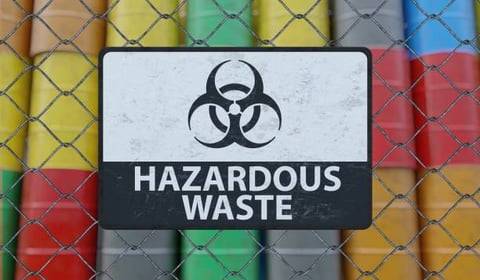
Landfills leak. Landfills are used to store trash, and the theory is that they will never leak. This is not true. Landfills eventually leak, and the gas from them can be toxic. The gas is created by decomposing materials in the landfill. Landfill gas can also be a huge fire hazard because it contains methane, which is highly combustible. We should start thinking about how we are going to deal with this problem now before it becomes a major issue for our society in the future.
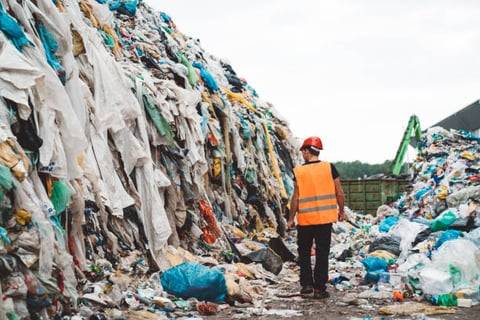
Burning produces toxic air pollution. Burning solid waste is a significant contributor to the world's air pollution problem. In developing countries, burning solid waste is a viable and cheap solution for managing their garbage. This practice has led to the release of toxic air pollution that has contributed to global climate change and environmental degradation.

It causes cancer. We usually think of solid waste as something that we can see, but the truth is that there are many contaminants in it. It's not just the food and drinks we consume. There are also other substances like pesticides, fertilizers, and herbicides. These substances are linked to cancer and more.
Access to recycling is limited. One of the most effective ways to reduce plastic pollution is recycling. But there are many barriers that limit recycling, such as access to recycling programs and the availability of recycling bins, especially in those developing countries.
Before we dig into the solutions to our trash problem, we can purchase quality and effective garbage trucks to handle our waste around cities and towns. CLTruck offers new garbage trucks, roll-off trucks, trash trucks of all types, containers, trailers, balers, and garbage truck parts. Please contact us here at [email protected]
2 notes
·
View notes
Text
A LEED CERTIFIED PROFESSIONAL'S BENEFITS
We are a LEED Consultancy; LEED accreditation is highly valued in the logistics real estate market. However, many landowners are unaware of what qualifies as being "LEED certified." The various advantages of LEED certification are covered in this booklet. The U.S. Green Building Council (USGBC) sponsors the globally recognized LEED (Leadership in Energy & Environmental Design) green building certification program. A building or community can earn a LEED certification from a third party, which attests to sustainable building practices and materials used during construction.
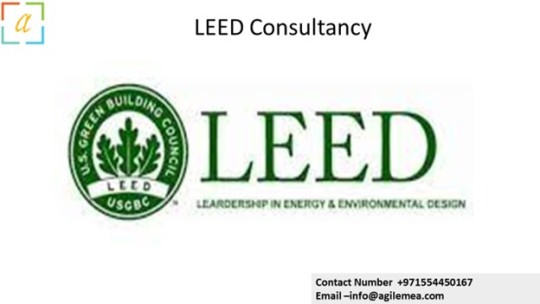
As a LEED Consultancy in Dubai, improved indoor air quality, lower carbon emissions, water efficiency, and energy savings are all priorities in the design and construction of LEED-certified buildings. Additionally, the overall resource stewardship of the design and its sensitivity to its environmental impact are considered. Obtaining LEED certification has numerous advantages. First, getting certified demonstrates your commitment to employing environmentally friendly building techniques, which can help you lead your industry and improve your reputation. Renters find your warehouse or facility more appealing when LEED certified, especially as more businesses show interest in green technologies.
In our opinion as LEED Consultancy, the financial benefits of earning a LEED certification are also present. In addition, their property values continue to rise. You may do a few things if your facility needs to be LEED certified or if you wish to raise your LEED certification score. To lower your facility's overall carbon footprint, install energy-saving lights and appliances, more effective waste management systems, water-saving faucets and toilets, solar or wind-powered energy systems, air scrubbers, and other features.
We believe as a LEED Consultancy in Dubai, it is commonly recognized that LEED projects have reduced running expenses and are significantly more energy-efficient than conventional structures. Regarding water usage, LEED-certified buildings use less potable water than non-certified structures. Projects with LEED certification offer a higher building value and a higher return on investment. Developers can achieve high occupancy rates using LEED as a powerful marketing tool. Building systems in LEED-certified projects must be commissioned throughout the design and construction phases, which means that the building systems produce fewer issues during the operations phase.
The healthier environments that result from increased exposure to natural daylight, increased ventilation rates inside the building, less contaminated indoor air, more open spaces, improved acoustic performance, and many other benefits also boost productivity for employees working in LEED-certified buildings. The life-cycle cost of a regular building usually ends up being much higher than that of a LEED-certified building, even though the initial cost of a LEED-certified building may be slightly higher than that of a regular building (due to commissioning activities, LEED consulting, and LEED application costs).
0 notes
Text
TBI Corn Share Price riding the wave of success
In the dynamic world of stock markets, TBI Corn has emerged as a standout performer, capturing the attention of investors with remarkable TBI Corn Share Price surge. This article explores the factors driving the success of TBI Corn Share Price, analyzing its market performance, strategic initiatives, and the broader industry trends that have contributed to its impressive rise.
About TBI Corn
Company Background
TBI Corn is a leading agribusiness company specializing in the production, processing, and distribution of corn and corn-related products. With a rich history and a strong commitment to innovation and sustainability, TBI Corn has established itself as a key player in the agricultural sector. The company’s operations span the entire value chain, from seed development to final product delivery, ensuring high-quality standards and operational efficiency.
Market Position
TBI Corn has carved out a significant market share in the agribusiness industry, known for its high-yield corn varieties and efficient supply chain management. The company’s focus on research and development, coupled with strategic partnerships, has solidified its position as a leader in the market.
Drivers of Share Price Success
Robust Financial Performance
The cornerstone of TBI Corn’s share price success lies in its strong financial performance. The company has consistently delivered impressive revenue and profit growth, driven by increased demand for its products and efficient cost management. Quarterly financial reports have repeatedly exceeded market expectations, boosting investor confidence and driving up the share price.
Innovation in Agriculture
Innovation has been a key pillar of TBI Corn’s strategy. The company invests heavily in research and development to create high-yield, disease-resistant corn varieties. These innovations not only improve crop yields and farmer profitability but also strengthen TBI Corn’s market position. Additionally, the adoption of advanced agricultural technologies, such as precision farming and data analytics, has enhanced operational efficiency and sustainability.
Strategic Expansion
TBI Corn’s strategic expansion efforts have also played a crucial role in its share price appreciation. The company has expanded its footprint both domestically and internationally, tapping into new markets and customer bases. Strategic acquisitions and joint ventures have further bolstered its market presence and diversified its revenue streams.
Sustainable Practices
Sustainability is at the core of TBI Corn’s operations. The company has implemented numerous initiatives to reduce its environmental footprint, such as adopting sustainable farming practices, reducing water usage, and minimizing waste. These efforts have not only enhanced the company’s reputation but also attracted environmentally-conscious investors, contributing to the rise in share price.
Investor Sentiment and Market Trends
Positive Investor Sentiment
Investor sentiment towards TBI Corn has been overwhelmingly positive. The company’s consistent performance, strong growth prospects, and commitment to sustainability have made it an attractive investment option. The positive sentiment is reflected in the steady increase in the share price, as investors continue to show confidence in the company’s future.
Favorable Industry Trends
The broader agricultural industry trends have also favored TBI Corn. Rising global demand for food, driven by population growth and changing dietary habits, has increased the demand for high-yield, quality corn. Additionally, the push towards sustainable and efficient farming practices aligns well with TBI Corn’s strategic direction, further supporting its market position.
Future Outlook
Continued Innovation and R&D
Looking ahead, TBI Corn is well-positioned to maintain its growth trajectory by continuing to invest in innovation and research. The development of new corn varieties and advanced agricultural technologies will be crucial in driving future growth and maintaining a competitive edge.
Expansion into New Markets
TBI Corn’s strategy of expanding into new markets remains a key focus. The company plans to explore emerging markets with high growth potential, further diversifying its revenue base and mitigating risks associated with market fluctuations.
Addressing Challenges
While the outlook is positive, TBI Corn must navigate potential challenges such as climate change, regulatory changes, and market competition. However, the company’s proactive approach to sustainability, innovation, and strategic planning positions it well to address these challenges effectively.
Conclusion
TBI Corn’s share price success is a testament to the company’s strong financial performance, innovative capabilities, and strategic vision. By staying ahead of industry trends and continuously enhancing its operations, TBI Corn has positioned
itself as a leader in the agricultural sector. The company's commitment to sustainability and strategic expansion efforts have further solidified its market position, making it an attractive choice for investors. As TBI Corn continues to ride the wave of success, its future prospects remain promising, with ongoing innovations and market expansion poised to drive continued growth. Investors and market analysts alike will undoubtedly keep a close eye on TBI Corn as it navigates the evolving landscape of the agribusiness industry, capitalizing on opportunities and addressing challenges with resilience and strategic foresight.
0 notes
Text
Revolution in the Dairy Industry: Innovations and Growth in 2024
The dairy industry has been witnessing significant changes and advancements in recent times, positioning itself as a dynamic sector with both opportunities and challenges. As we delve into the latest news on dairy, it's evident that technological innovations, sustainability practices, and market expansion are driving the industry forward.
One of the most noteworthy developments is the adoption of advanced technology in dairy farming. Automated milking systems, precision farming techniques, and data analytics are transforming traditional dairy farms into high-tech operations. These technologies not only improve efficiency and productivity but also enhance the health and welfare of dairy animals. For instance, sensors and wearable devices can monitor the health and milk production of cows in real-time, allowing farmers to make informed decisions swiftly.
Sustainability has become a focal point in the dairy sector. There is a growing emphasis on reducing the carbon footprint of dairy farms through innovative practices such as methane digesters, which convert waste into renewable energy. Additionally, initiatives to improve water use efficiency and manage waste effectively are being implemented globally. These measures are crucial for meeting the environmental regulations and consumer demand for sustainably produced dairy products.
The Indian dairy industry is also making headlines with its remarkable growth and potential. India, being the largest producer of milk globally, continues to expand its dairy sector. The government has been proactive in supporting the industry through various schemes and subsidies aimed at improving infrastructure, enhancing milk quality, and promoting exports. One of the key initiatives includes the National Dairy Plan, which focuses on increasing milk production and productivity through scientific breeding and feeding practices.
Moreover, the Indian dairy industry is witnessing a surge in demand for value-added dairy products such as cheese, yogurt, and flavored milk. This shift is driven by changing consumer preferences, urbanization, and increased disposable income. Dairy companies are responding to this trend by diversifying their product portfolios and investing in research and development to introduce innovative products that cater to health-conscious and convenience-seeking consumers.
Global trade in dairy products is also experiencing fluctuations due to geopolitical factors, trade agreements, and changes in consumer demand. Export opportunities are expanding for countries that can meet the stringent quality standards and sustainability criteria set by importing nations. The increasing popularity of plant-based dairy alternatives is another trend that traditional dairy producers are navigating, either by innovating within their product lines or by entering the alternative dairy market themselves.
In conclusion, the latest news on dairy reflects a sector that is rapidly evolving through technological advancements, sustainability efforts, and market diversification. The Indian dairy industry stands out with its impressive growth trajectory and strategic initiatives, showcasing its potential to dominate the global dairy landscape. As the industry continues to innovate and adapt, it promises to deliver nutritious and sustainable dairy products to consumers worldwide.
0 notes
Text
Green Packaging Market Overview: Growth Factors and Future Trends (2023-2032)

The global market for green packaging is expected to develop at a compound annual growth rate (CAGR) of 32.30% between 2024 and 2032, from its estimated USD 1725.8 million in 2023 to USD 21430.34 million in 2032.
The Green Packaging Market, also known as sustainable or eco-friendly packaging, represents a rapidly growing segment within the broader packaging industry, driven by increasing environmental awareness and consumer demand for sustainable products. This market encompasses packaging solutions that are designed to have minimal environmental impact throughout their lifecycle, from production to disposal.
Key components include biodegradable and compostable materials, recyclable content, and reusable packaging options. The shift towards green packaging is fueled by stringent regulatory frameworks and policies aimed at reducing plastic waste and promoting circular economy principles. Major industries such as food and beverages, personal care, pharmaceuticals, and consumer goods are adopting green packaging to enhance their environmental credentials and meet the evolving preferences of eco-conscious consumers. Innovations in material science, such as plant-based plastics and advanced recycling technologies, are central to the development of new, sustainable packaging solutions.
Additionally, companies are increasingly investing in green packaging as part of their corporate social responsibility initiatives, recognizing that sustainable practices can drive brand loyalty and differentiate their products in a competitive marketplace. Despite the higher initial costs associated with green packaging, the long-term benefits, including waste reduction, resource efficiency, and potential cost savings from waste management, make it an attractive option for businesses committed to sustainability. As awareness and technological advancements continue to grow, the green packaging market is expected to expand significantly, contributing to a more sustainable future.
Green packaging helps the environment to be cleaner and more sustainable through several key mechanisms:
Reduction of Waste: Green packaging often involves the use of materials that are biodegradable, compostable, or recyclable. By reducing the amount of non-degradable waste that ends up in landfills, it helps mitigate the long-term environmental impact of waste disposal. Compostable and biodegradable materials break down naturally, reducing the accumulation of persistent waste.
Lower Carbon Footprint: Sustainable packaging materials typically require less energy and resources to produce compared to traditional plastics and other non-renewable materials. This results in lower greenhouse gas emissions during the production process. Additionally, many green packaging options use renewable resources, further reducing their overall carbon footprint.
Resource Efficiency: Green packaging often involves using materials more efficiently, such as reducing the amount of packaging material needed (lightweighting) and using recycled materials. This conserves natural resources, reduces the need for virgin materials, and lessens the environmental impact of extraction and processing activities.
Promoting Recycling and Reuse: By designing packaging that is easier to recycle and encouraging consumers to recycle, green packaging helps keep materials in circulation rather than being disposed of after a single use. Reusable packaging options, such as refillable containers, also help reduce waste by encouraging repeated use.
Reducing Toxicity: Green packaging avoids the use of harmful chemicals and additives often found in conventional packaging materials. This reduces the release of toxic substances into the environment during production, use, and disposal, leading to a cleaner and safer ecosystem.
Decreasing Pollution: The production and disposal of traditional packaging materials contribute to air, water, and soil pollution. Green packaging materials, especially those that are biodegradable or compostable, help minimize pollution by breaking down into non-toxic components. Additionally, the use of cleaner production technologies reduces emissions of pollutants.
Supporting Circular Economy: Green packaging is a key component of the circular economy, which aims to keep products and materials in use for as long as possible. By designing packaging that can be easily recycled or repurposed, green packaging supports a system where waste is minimized, and materials are continuously cycled back into the production process.
Raising Environmental Awareness: The adoption of green packaging by businesses and brands helps raise awareness among consumers about the importance of sustainability. This can lead to more environmentally conscious behavior, such as increased recycling and reduced use of single-use plastics, further contributing to a cleaner environment.
The Green Packaging Market is influenced by several trending factors that are driving its growth and evolution. One of the most significant trends is the increasing consumer demand for sustainable and environmentally friendly products. As awareness of environmental issues such as plastic pollution and climate change rises, consumers are more likely to choose products with eco-friendly packaging. Regulatory pressures are also a major driver, with governments worldwide implementing stricter regulations on packaging waste and promoting the use of sustainable materials. Innovations in material science are another critical trend, with advancements in biodegradable plastics, plant-based materials, and improved recycling technologies making green packaging more viable and cost-effective.
Additionally, the rise of e-commerce has heightened the need for sustainable packaging solutions that can reduce waste and environmental impact in the shipping and delivery process. Companies are also recognizing the branding and competitive advantages of adopting green packaging, using it to enhance their corporate social responsibility (CSR) profiles and appeal to a growing segment of environmentally conscious consumers. Furthermore, collaborations between stakeholders in the packaging industry, such as material suppliers, manufacturers, and recyclers, are fostering the development of more sustainable packaging solutions. These trends, combined with ongoing technological advancements and shifting consumer preferences, are propelling the green packaging market forward and shaping its future landscape.
Key Players:
Amcor
Be Green Packaging
DS Smith
DuPont
Evergreen Packaging
Mondi
Nampak
Ball Corporation
Sealed Air
Tetra Laval
More About Report- https://www.credenceresearch.com/report/green-packaging-market
The Green Packaging Market presents numerous opportunities for businesses, driven by the growing emphasis on sustainability and environmental responsibility. Here are some key opportunities within this market:
Innovation in Materials: There is a significant opportunity for companies to innovate with new sustainable materials. Developing advanced biodegradable, compostable, and plant-based packaging materials can meet the rising demand for eco-friendly alternatives to traditional plastics.
Circular Economy Solutions: Companies can capitalize on opportunities by creating packaging solutions that support the circular economy. This includes designing packaging that is easily recyclable, reusable, or made from recycled content, helping to close the loop on material use.
Regulatory Compliance: With increasing regulatory pressure to reduce packaging waste and environmental impact, businesses that proactively adopt green packaging can gain a competitive edge. Compliance with stringent environmental regulations can open new markets and customer segments that prioritize sustainability.
E-commerce Growth: The rapid growth of e-commerce presents a unique opportunity for green packaging solutions tailored to the needs of online retailers. Developing lightweight, durable, and recyclable packaging that can protect products during shipping while minimizing environmental impact is highly valuable.
Brand Differentiation and Loyalty: Adopting green packaging can enhance a company’s brand image and foster customer loyalty. Consumers are increasingly choosing brands that demonstrate a commitment to sustainability. Eco-friendly packaging can serve as a powerful marketing tool to attract and retain environmentally conscious customers.
Cost Savings and Efficiency: Green packaging solutions often lead to long-term cost savings through reduced material use, lower waste disposal costs, and potential efficiencies in production and supply chain processes. Companies can benefit financially while also contributing to environmental goals.
Partnerships and Collaborations: Collaborating with other businesses, NGOs, and government bodies on sustainability initiatives can lead to innovative solutions and shared resources. Partnerships can accelerate the development and adoption of green packaging technologies.
Technological Advancements: Investing in technology to improve the production and functionality of green packaging can create opportunities for market growth. This includes advancements in biodegradable polymers, smart packaging that enhances recyclability, and efficient manufacturing processes.
Consumer Education and Engagement: Educating consumers about the benefits of green packaging and how to properly dispose of or recycle it can enhance the market's growth. Companies that engage with consumers on sustainability issues can build stronger relationships and encourage more responsible consumption patterns.
Global Market Expansion: As global awareness and demand for sustainable products increase, there are significant opportunities for companies to expand their green packaging solutions into emerging markets. Developing countries are becoming more environmentally conscious, providing a growing customer base for sustainable packaging products.
Segmentation:
By Material Segmentation
Biodegradable packaging
Bioplastics
Biodegradable Paper and Cardboard
Biodegradable Packaging Foam
Recyclable Packaging
Recyclable Plastics
Recyclable Paper and Cardboard
Recyclable Metal and Glass
Compostable Packaging
Compostable Plastics
Compostable Paper and Cardboard
Compostable Packaging Films
By Product Type Segmentation
Primary Packaging
Bottles and Jars
Pouches and Flexible Packaging
Trays and Clamshells
Secondary Packaging
Cardboard Boxes and Cartons
Wrap and Fill Materials
Shrink Wrap and Stretch Film
Tertiary packaging
Bulk Containers
Dunnage and Void Fill
By End-User Industry Segmentation
Food and Beverage
Personal Care and Cosmetics
Healthcare and Pharmaceuticals
E-commerce and Retail
Industrial and Automotive
Browse the full report – https://www.credenceresearch.com/report/green-packaging-market
Browse Our Blog: https://www.linkedin.com/pulse/green-packaging-market-key-industry-dynamics-analysis-xlzxf
Contact Us:
Phone: +91 6232 49 3207
Email: [email protected]
Website: https://www.credenceresearch.com
0 notes
Text
Urea Ammonium Nitrate Prices Trend, Database, Chart, Index, Forecast

Urea Ammonium Nitrate (UAN) prices have become a focal point for many in the agricultural industry due to their significant impact on farming costs and, consequently, food prices. As a liquid fertilizer composed of urea and ammonium nitrate, UAN offers a convenient solution for farmers looking to efficiently deliver nitrogen to their crops. However, the pricing dynamics of UAN are influenced by a myriad of factors, ranging from raw material costs to global supply chain disruptions.
One of the primary determinants of UAN prices is the cost of its key ingredients: urea and ammonium nitrate. The prices of these components are themselves subject to fluctuations in the global market for natural gas, which is a critical input in the production of ammonia, a precursor for both urea and ammonium nitrate. When natural gas prices soar, the production costs of ammonia rise, subsequently driving up the prices of urea and ammonium nitrate. This cascading effect makes UAN prices highly sensitive to changes in the energy markets.
Another significant factor influencing UAN prices is the global supply chain. Transportation costs, availability of shipping containers, and logistical challenges can all impact the final price of UAN. For instance, disruptions at major ports or a shortage of transportation vessels can delay shipments and reduce the supply of UAN in key agricultural regions, thereby pushing prices higher. Additionally, geopolitical tensions and trade policies can lead to tariffs and trade barriers that further complicate the supply chain, adding to the volatility in UAN prices.
Get Real Time Prices of Urea Ammonium Nitrate: https://www.chemanalyst.com/Pricing-data/urea-ammonium-nitrate-1564
Demand dynamics also play a crucial role in the pricing of UAN. Agricultural demand for nitrogen-based fertilizers is closely tied to the planting season and the types of crops being cultivated. In periods of high agricultural activity, the demand for UAN typically increases, which can drive up prices if the supply does not keep pace. Conversely, during off-peak seasons or when farmers switch to less nitrogen-intensive crops, the demand for UAN may decline, leading to potential price decreases.
Market speculation and financial instruments also impact UAN prices. Futures contracts and other financial products allow investors to speculate on the future prices of fertilizers, including UAN. These speculative activities can sometimes lead to price increases that are not directly tied to immediate supply and demand fundamentals. The role of market speculators thus adds another layer of complexity to the pricing of UAN, making it more unpredictable.
Environmental regulations and policies are increasingly becoming influential in shaping UAN prices. Stricter environmental standards for fertilizer production and usage can increase production costs and limit the supply of UAN. Regulations aimed at reducing greenhouse gas emissions, managing water quality, and ensuring sustainable agricultural practices can all impose additional costs on producers, which are often passed on to consumers in the form of higher prices. Furthermore, policy shifts towards promoting organic farming and reducing the dependency on synthetic fertilizers can also affect the demand and price structure of UAN.
Technological advancements and innovations in fertilizer production and application methods can also influence UAN prices. Improved production techniques that enhance efficiency and reduce waste can lower production costs, potentially leading to more stable or lower prices for UAN. On the other hand, the adoption of precision agriculture technologies, which allow for more targeted and efficient application of fertilizers, may reduce the overall demand for UAN, thereby impacting its market price.
Global economic conditions, including inflation rates and currency exchange rates, play a role in determining UAN prices. Inflation can lead to higher costs for raw materials, labor, and transportation, all of which contribute to the final price of UAN. Similarly, fluctuations in currency exchange rates can affect the competitiveness of UAN in the international market, influencing export and import dynamics and thereby affecting prices.
Weather patterns and climatic conditions are also crucial in understanding UAN price movements. Severe weather events such as hurricanes, floods, and droughts can disrupt production and transportation networks, leading to supply shortages and price spikes. Additionally, climate change and the resulting shifts in agricultural practices and crop patterns can alter the demand for UAN, impacting its price over the long term.
In summary, the prices of Urea Ammonium Nitrate are shaped by a complex interplay of factors, including raw material costs, supply chain dynamics, demand fluctuations, market speculation, environmental regulations, technological advancements, global economic conditions, and climatic factors. Each of these elements can contribute to the volatility and unpredictability of UAN prices, making it a challenging landscape for farmers and industry stakeholders to navigate. Understanding these factors is essential for anticipating price trends and making informed decisions in the agricultural sector.
Get Real Time Prices of Urea Ammonium Nitrate: https://www.chemanalyst.com/Pricing-data/urea-ammonium-nitrate-1564
Contact Us:
ChemAnalyst
GmbH - S-01, 2.floor, Subbelrather Straße,
15a Cologne, 50823, Germany
Call: +49-221-6505-8833
Email: [email protected]
Website: https://www.chemanalyst.com
0 notes
Text
Agrochemicals Market - Forecast (2024 - 2030)
The global agrochemical market revenue crossed $267.6 billion as of 2023 with a CAGR of 4% and will continue to leverage a better economy in the forecasted period 2024 to 2030. According to a finding of Proceedings of the National Academy of Sciences (PNAS) of the United States of America, pests and pathogens cost nearly $40 billion to the plants and forest crop production in the U.S. every year. This statistic is reflective of the need for agricultural chemicals such as insecticides, herbicides, fungicides, and pesticides on a large scale. The residential and commercial gardens are also affected by the resultant economic loss. As a result, they incorporate agrichemical sprays and fertilizers to eradicate pest issues along with promoting plant growth and crop yields significantly. APAC is a massively populated region; therefore, it relies on farming and cultivation practices to balance the increasing food consumption rate. However, the rise in infested agricultural fields is a major limitation to the regional agricultural economy. Ricepedia reports that Asia, alone, produces and consumes 90% of rice in the world. Asian agricultural countries use modern farming techniques with a stronghold in agronomy. Besides, there is a surge of government-subsidized agrichemical inputs available to the local farmers. All these collectively influence APAC’s contribution to the global agrochemical market. This resonates with the fact that APAC held a major regional share of 32.50% acquiring huge profit in the year 2023.

IndustryARC’s expertise highlights, “Increase in the number of invasive species is a perennial threat to the current agricultural productivity which majorly upheaves the global agrochemical market demand to eliminate the threat of crop loss.” Non-agricultural indoor plantations, residential gardening, nurseries, and others have subsequent involvement in the mounting agrochemical demand which is projected to grow at a CAGR of 3.86% during the forecast period of 2024-2030. Pests and diseases are a constant threat to wheat and maize cultivation throughout the world. Consequently, there is a greater dependency on pesticides, adjuvants, and fertilizers to inhibit the growth of pest infestation. Wheat and maize farming segment is evaluated to increase at 5.20% CAGR through to 2030 and is foreseen to expand largely over this period.
The agrochemicals market is increasingly influenced by the trend toward sustainable agriculture. This shift entails developing and using products that minimize environmental impact while maintaining agricultural productivity. This trend is driven by consumer awareness, regulatory pressures, and a broader societal push towards sustainable practices. Companies are focusing on eco-friendly fertilizers and pesticides, soil health, and water conservation methods. This shift also includes a greater emphasis on integrated pest management and reduced chemical use, balancing agricultural needs with ecological preservation.
Digital agriculture is revolutionizing the agrochemicals market by enabling more precise and efficient use of agricultural inputs. This trend involves leveraging technologies like AI, IoT, and big data analytics for targeted pesticide and fertilizer applications, minimizing waste and environmental impact. By providing farmers with real-time data on crop health, soil conditions, and weather patterns, digital tools help in optimizing resource use and decision-making. This technological integration not only boosts crop yields but also supports sustainable farming practices through informed agrochemical application.
Agrochemicals Market Growth Drivers:
Frequent incidences of new pests, pathogens, and weeds in farming, plantation, and residential gardening discovered in the past decade. Significantly, there is a huge requirement for effective agrochemicals for reducing economic and crop loss. Also, the application of chemical growth agents such as adjuvants and hormones helps in healthy crop yields. Consequently, the global agrochemical market experiences huge demand thereby gaining a lucrative economy.
While chemical pests and pathogen inhibitors pose a threat to ecological sustenance, organic agrochemicals are on the rise in modern farming across the world. There is a rise in the organic farming method owing to its suitability for regulating the spread and growth of agricultural pests and diseases. Concurrently, the increasing usage of natural pesticides and fertilizers provides a greater scope of opportunity for the global agrochemical market.
Agrochemicals Market Companies:
Bulk supply of agrochemicals throughout the world is facilitated by different companies such as The Mosaic Co., Agrium Inc., BASF SE, DowDuPont, Israel Chemicals, PI Industries, Bayer AG, Sumitomo Chemical Co., Syngenta AG, and Yara International. R&D investment for developing innovative techniques and products also complying with environmental sustainability and government regulations are key to the success of these market leaders.
Sumitomo Chemical Co. is a leading chemical product distributing company in Japan with a prime focus on petrochemicals and plastics, pharmaceuticals, health, and crop-related services. Their main involvement in the agricultural sector is promoted by crop protection chemicals which include insecticides, plant growth regulators, fungicides, herbicides, and so on.
#agrochemical market price#agrochemical market size#agrochemical market share#agrochemical market forecast
0 notes
Text
Synthetic Zeolite Market to be Worth USD 6.7 billion by 2031
The global synthetic zeolite market was estimated at a value of US$ 5.3 billion in 2022. It is anticipated to register a 2.6% CAGR from 2023 to 2031 and by 2031, the market is likely to attain US$ 6.7 billion by 2031.
Important players in the petrochemicals industry are investing more in the manufacturing processes as a result of the growing demand for these products brought on by the world economy's expansion and population boom. For example, by 2030, Oil and Natural Gas Corp (ONGC) intends to invest US$12.0 billion in the manufacture of petrochemicals. This is one of the key elements propelling the market for synthetic zeolites.
Request Sample of the Report: https://www.transparencymarketresearch.com/sample/sample.php?flag=S&rep_id=3128
Market dynamics are anticipated to be positively impacted by the global industrialization surge and the rise in industrial applications requiring Fluid Catalytic Cracking (FCC) catalysts. The increasing development of infrastructure is enhancing the use of synthetic molecular sieves across a range of sectors. These include agriculture, petroleum refining, biomedical, environmental cleanup, and chemical manufacture.
Market Segmentation
By Service Type
Zeolite A
Zeolite X
Zeolite Y
Zeolite ZSM-5
By Sourcing Type
Hydrothermal Synthesis
Sol-Gel Processing
By Application
Detergents
Catalysts
Adsorbents
Ion Exchange
Water Treatment
By Industry Vertical
Petrochemicals
Water Treatment & Filtration
Detergents & Cleaners
Construction
Healthcare & Pharmaceuticals
By Region
North America
Europe
Asia-Pacific
Latin America
Middle East & Africa
Regional Analysis
The Asia-Pacific region holds the largest share of the synthetic zeolite market, driven by rapid industrialization, urbanization, and growing demand for water treatment solutions. North America and Europe also represent significant markets due to stringent environmental regulations and high demand from the petrochemical and detergent industries. The Middle East and Africa region is expected to witness moderate growth due to increasing industrial activities and investments in water treatment infrastructure.
Market Drivers and Challenges
Drivers
Environmental Regulations: Stricter environmental regulations are pushing industries to adopt more efficient and eco-friendly materials like synthetic zeolites for pollution control and waste management.
Industrial Growth: Rapid industrialization, particularly in emerging economies, is boosting the demand for synthetic zeolites in various applications such as catalysis and adsorption.
Technological Advancements: Innovations in synthetic zeolite production methods and their functional properties are expanding their application range and enhancing performance.
Challenges
High Production Costs: The synthesis of high-quality zeolites can be costly, which may hinder market growth in price-sensitive regions.
Raw Material Availability: Fluctuations in the availability and cost of raw materials required for zeolite production can impact market dynamics.
Competition from Alternatives: The presence of alternative materials such as activated carbon and silica gel poses a competitive challenge to synthetic zeolites.
Market Trends
Sustainability Focus: Increasing emphasis on sustainable and green chemistry is driving the development of eco-friendly synthetic zeolites.
Nano-Zeolites: Advancements in nanotechnology are leading to the production of nano-sized zeolites with enhanced properties for specialized applications.
Customized Zeolites: Growing trend towards tailor-made zeolites designed for specific industrial applications to maximize efficiency and performance.
Future Outlook
The synthetic zeolite market is poised for steady growth, with ongoing research and development activities expected to lead to new and improved products. The increasing demand for efficient and sustainable solutions in industries such as water treatment, petrochemicals, and healthcare will continue to drive market expansion. Additionally, advancements in production technologies and the development of customized zeolites will open new avenues for market growth.
Key Market Study Points
Detailed analysis of market dynamics, including drivers, challenges, and trends.
Comprehensive segmentation by service type, sourcing type, application, industry vertical, and region.
In-depth regional analysis highlighting key markets and growth prospects.
Examination of competitive landscape featuring key players and their market strategies.
Overview of recent developments and technological advancements in the synthetic zeolite market.
Competitive Landscape
The synthetic zeolite market is highly competitive, with key players including BASF SE, Honeywell International Inc., Albemarle Corporation, Clariant AG, and W. R. Grace & Co. These companies are focusing on expanding their product portfolios, enhancing production capacities, and entering strategic partnerships to strengthen their market positions. Additionally, investments in research and development to innovate and improve product performance are a common strategy among leading market players.
Buy this Premium Research Report: https://www.transparencymarketresearch.com/checkout.php?rep_id=3128<ype=S
Recent Developments
BASF SE has introduced a new range of high-performance zeolites for catalytic applications in the petrochemical industry.
Honeywell International Inc. has expanded its production facilities to meet the growing demand for synthetic zeolites in water treatment and air purification.
Albemarle Corporation has launched eco-friendly zeolite products designed to enhance sustainability in industrial processes.
About Transparency Market Research
Transparency Market Research, a global market research company registered at Wilmington, Delaware, United States, provides custom research and consulting services. Our exclusive blend of quantitative forecasting and trends analysis provides forward-looking insights for thousands of decision makers. Our experienced team of Analysts, Researchers, and Consultants use proprietary data sources and various tools & techniques to gather and analyses information.
Our data repository is continuously updated and revised by a team of research experts, so that it always reflects the latest trends and information. With a broad research and analysis capability, Transparency Market Research employs rigorous primary and secondary research techniques in developing distinctive data sets and research material for business reports.
Contact:
Transparency Market Research Inc.
CORPORATE HEADQUARTER DOWNTOWN,
1000 N. West Street,
Suite 1200, Wilmington, Delaware 19801 USA
Tel: +1-518-618-1030
USA – Canada Toll Free: 866-552-3453
Website: https://www.transparencymarketresearch.com
0 notes
Text
Why is ISO 14001 Certification beneficial for companies in Malta?
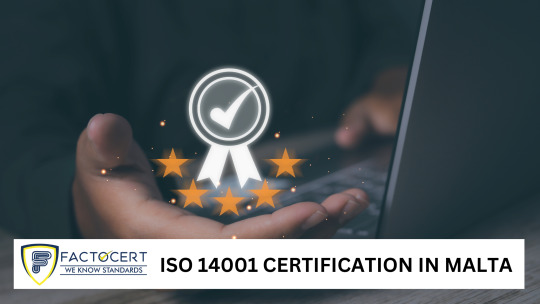
How ISO 14001 Certification in Malta Benefits Companies
ISO 14001 Certification in Malta, an island country recognized for its splendor and rich history, likewise becomes a hub for environmentally aware groups. In the contemporary world, consumers and buyers increasingly prioritize sustainability. For Maltese agencies seeking to demonstrate their dedication to environmental obligation, accomplishing ISO 14001 certification gives a strategic gain.
What is ISO 14001?
ISO 14001 is the international trend for Environmental Management Systems (EMS). It offers a complete framework for establishing, implementing, retaining, and continually improving an EMS. Think of it as a roadmap for minimizing environmental effects and integrating environmental duty into your center business operations in Malta.
Environmental Responsibility: A Growing Priority
Consumers around are becoming environmentally conscious, and groups are taking word. The companies in Malta that prioritize sustainability and demonstrate a commitment to reducing their environmental footprint are more likely to draw:
Eco-conscious customers: Customers actively searching for environmentally responsible services and products.
Socially accountable buyers: Investors who prioritize corporations with sturdy environmental practices.
Talented personnel: A new era of employees frequently fee operating for businesses that can be environmentally accountable.
Benefits of ISO 14001 Certification in Malta
Obtaining ISO 14001 Certification in Malta unlocks a multitude of benefits for Maltese corporations of all sizes:
Enhanced Environmental Performance: The standard promotes efficient aid usage, waste reduction, and pollution prevention. By implementing an EMS, Maltese corporations can limit their environmental footprint and perform more effectively and sustainably. This translates to decreased power consumption, reduced water usage, and minimized waste generation.
Cost Savings: Reduced resource intake and waste technology often cause colossal financial savings for Maltese agencies. Energy performance measures, for instance, can lead to decreased application bills. Additionally, proper waste management practices can decrease disposal prices.
Improved Brand Reputation: ISO 14001 Certification in Malta is a globally identified image of environmental dedication. This certification enhances your emblem recognition in Malta and worldwide, positioning your employer as a pacesetter in sustainability. A robust logo recognition can entice new clients and companions who prioritize environmental duty.
Compliance with Regulations: Environmental regulations are becoming increasingly stringent worldwide. An ISO 14001-compliant EMS can help Maltese businesses stay ahead of evolving regulations and ensure compliance with present environmental legal guidelines. This proactive technique minimizes the danger of fines and criminal issues.
Competitive Advantage: In an increasingly aggressive market, demonstrating environmental obligation can give Maltese companies a tremendous advantage. Being recognized as an environmentally friendly business enterprise can differentiate you from the competition and appeal to environmentally aware customers.
The Journey to ISO 14001 Certification in Malta
The course for ISO 14001 certification in Malta entails a structured technique. Here’s a breakdown of the critical steps:
Gap Analysis: An initial assessment is conducted to identify regions where your existing environmental practices align with ISO 14001 Certification in Malta and highlight areas for development. This evaluation allows you to understand your modern-day ecological effect and the changes needed for compliance.
Policy and Documentation Development: Your organization will need to establish a documented environmental coverage that outlines your dedication to ecological obligation and information on your technique for environmental control. Additional strategies and documents can also be evolved to support your EMS.
Implementation and Training: Your Maltese business enterprise implements the developed rules and procedures. Employees obtain schooling to ensure they recognize their roles and responsibilities inside the EMS. Effective training empowers your crew to contribute to your environmental goals.
Internal Audit: An internal audit is conducted to assess the effectiveness of the carried out EMS and identify any areas requiring corrective movement. This inner assessment helps identify any gaps or inconsistencies before the reputable certification audit.
Certification Audit: An accredited certification body conducts a final audit to affirm that your EMS meets the requirements of ISO 14001 Certification in Malta. Upon achieving crowning glory, your employer is awarded certification. This last audit ensures that your employer meets the globally recognized benchmark for environmental management.
Maintaining Your Certification: Continuous Improvement
It’s essential to remember that ISO 14001 Certification in Malta isn’t always a one-time achievement. The well-known certification emphasizes nonstop development. Following certification, your Maltese company must establish a plan for ongoing tracking and evaluation of your EMS. Regular reviews ensure your environmental practices stay effective and adapt to evolving environmental regulations and technological improvements.
Why Factocert for ISO 14001 Certification in Malta
We provide the best ISO 14001 consultants in Malta, Who are very knowledgeable and provide the best solution. And to know how to get ISO 14001 certification in Malta. Contact us at [email protected]. ISO 14001 Certification consultants work according to ISO 14001 standards and help organizations implement ISO 14001 certification with proper documentation.
For More Information, visit ISO 14001 Certification in Malta.
Related Links:
· ISO Certification in Malta
· ISO 9001 Certification in Malta
· ISO 14001 Certification in Malta
· ISO 45001 Certification in Malta
· ISO 27001 Certification in Malta
· ISO 22000 Certification in Malta
· ISO 13485 Certification in Malta
· HALAL Certification in Malta
· CE MARK Certification in Malta
RELATED ARTICLE
ISO 14001 Consultants in Malta
0 notes
Text
Top 10 Reasons to Invest in Dholera Smart City
As India’s first Greenfield smart city, Dholera Special Investment Region (SIR) is poised to become a cornerstone of modern urban development. Nestled in the state of Gujarat, Dholera offers a plethora of opportunities for investors. Here are the top 10 reasons why you should consider investing in Dholera Smart City.

As India’s first Greenfield smart city, Dholera Special Investment Region (SIR) is poised to become a cornerstone of modern urban development. Nestled in the state of Gujarat, Dholera offers a plethora of opportunities for investors. Here are the top 10 reasons why you should consider investing in Dholera Smart City.
Strategic Location
Dholera is strategically located on the Delhi-Mumbai Industrial Corridor (DMIC), one of the most significant infrastructure projects in India. Its proximity to key economic hubs like Ahmedabad and Bhavnagar enhances its accessibility and economic potential. The upcoming Dholera International Airport will further boost connectivity, making it a prime location for businesses.
World-Class Infrastructure
Dholera is designed to be a world-class city with state-of-the-art infrastructure. The city will feature advanced transportation systems, robust power supply, high-speed internet, and efficient water management. These elements are crucial for businesses looking to thrive in a modern, well-connected environment.
Government Support
The Indian government has designated Dholera as a Special Investment Region (SIR), which means it benefits from various incentives and support. This includes tax benefits, subsidies, and streamlined regulatory processes. The government’s commitment to the project ensures a stable and favorable investment climate.
Sustainability
Sustainability is at the heart of Dholera’s development. The city is planned with eco-friendly practices, including green buildings, renewable energy sources, and efficient waste management systems. Investing in Dholera aligns with the global shift towards sustainable development and responsible investment.
Economic Opportunities
Dholera is set to become an industrial powerhouse with diverse economic opportunities. Sectors such as manufacturing, IT, pharmaceuticals, and logistics are expected to flourish. The city’s integrated industrial parks and business zones will provide a conducive environment for various industries to grow and collaborate.
Smart City Features
Dholera embodies the essence of a smart city with its use of cutting-edge technology. Features include smart grids, intelligent traffic management, automated waste collection, and advanced security systems. These innovations enhance the quality of life for residents and create a business-friendly atmosphere.
Real Estate Potential
The real estate market in Dholera is booming, driven by the city’s rapid development and strategic planning. Investors can explore opportunities in residential, commercial, and industrial real estate. As the city grows, property values are expected to appreciate significantly, offering substantial returns on investment.
Skilled Workforce
Dholera aims to attract a skilled and educated workforce, thanks to its world-class educational institutions and training centers. This availability of talent is a critical factor for businesses looking to establish operations and scale up efficiently.
Quality of Life
Beyond business, Dholera promises a high quality of life for its residents. The city will feature modern amenities, ample green spaces, recreational facilities, and healthcare services. This holistic approach to urban living makes Dholera an attractive destination for families and professionals alike.
Visionary Leadership
The development of Dholera is driven by visionary leadership and meticulous planning. The project is spearheaded by experienced professionals and backed by both state and central governments. This leadership ensures that Dholera’s growth is sustainable, well-regulated, and aligned with global best practices.
Conclusion
Investing in Dholera Smart City is not just about capitalizing on a burgeoning market; it’s about being part of a revolutionary urban development that sets new standards for cities worldwide. With its strategic location, robust infrastructure, government support, and commitment to sustainability, Dholera presents an unparalleled investment opportunity. As the city continues to evolve, early investors stand to gain the most, making now the perfect time to invest in Dholera’s promising future.
#dholera international airport#dholera news#dholera sir#dholera smart city#smart city dholera#smart cities#dholera update#ahmedabad dholera expressway
0 notes